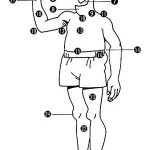 In Rudd v. Trossacs Investments Inc., the Divisional Court has ruled that a party to a settlement reached at a mandatory mediation could not examine the mediator as a witness on a subsequent motion seeking rectification of the settlement.
In Rudd v. Trossacs Investments Inc., the Divisional Court has ruled that a party to a settlement reached at a mandatory mediation could not examine the mediator as a witness on a subsequent motion seeking rectification of the settlement.
Justices Edward Then, James Carnwath and Katherine Swinton were hearing an appeal from an order made by Superior Court Justice Sidney Lederman. In this lawsuit, the plaintiffs were investors in a limited partnership. They sued the general partner, some related companies and their accountant. One of the defendants, Morris Kaiser, was sued in his personal capacity and was also a principal of some of the corporate defendants. Kaiser brought a motion for summary judgment, seeking dismissal of the action as against him personally. The motion was unopposed and was granted by Justice Susan Himel. Her Honour also awarded costs to Kaiser, in an amount exceeding $39,000. Counsel for the plaintiffs submitted that Himel J. had made an error in calculating the costs and that a reduction should be made. While Justice Himel was considering this submission, the lawsuit continued against the defendants other than Kaiser.

 The Supreme Court of Canada today refused leave to appeal the Court of Appeal’s decision in
The Supreme Court of Canada today refused leave to appeal the Court of Appeal’s decision in  Justice Mary J. Nolan of the Ontario Superior Court dismissed a slip and fall action against homeowners whose property lay next to a municipal sidewalk. In
Justice Mary J. Nolan of the Ontario Superior Court dismissed a slip and fall action against homeowners whose property lay next to a municipal sidewalk. In  From time to time in our Update newsletters, we have alerted our subscribers to an invaluable resource for judges, masters, practitioners and insurance claims personnel. It is the “
From time to time in our Update newsletters, we have alerted our subscribers to an invaluable resource for judges, masters, practitioners and insurance claims personnel. It is the “![images[1].jpg](https://www.cavanagh.ca/blog/wp-content/uploads/2006/03/images1.jpg) In actions brought under simplified procedure (also known as “Rule 76” actions), the plaintiff’s claim is generally limited to a maximum of $50,000. Examinations for discovery and pre-trial cross-examinations aren’t allowed. The whole process is supposed to be streamlined so as to reduce the expense of litigation.
In actions brought under simplified procedure (also known as “Rule 76” actions), the plaintiff’s claim is generally limited to a maximum of $50,000. Examinations for discovery and pre-trial cross-examinations aren’t allowed. The whole process is supposed to be streamlined so as to reduce the expense of litigation. The Court of Appeal released an interesting decision this afternoon, dealing with several issues. Most significantly, the case addressed the extent to which a commercial host, found to have over-served both a driver and a passenger, can be held responsible for a portion of the passenger’s contributory negligence for having accepted a drive from the intoxicated driver.
The Court of Appeal released an interesting decision this afternoon, dealing with several issues. Most significantly, the case addressed the extent to which a commercial host, found to have over-served both a driver and a passenger, can be held responsible for a portion of the passenger’s contributory negligence for having accepted a drive from the intoxicated driver.